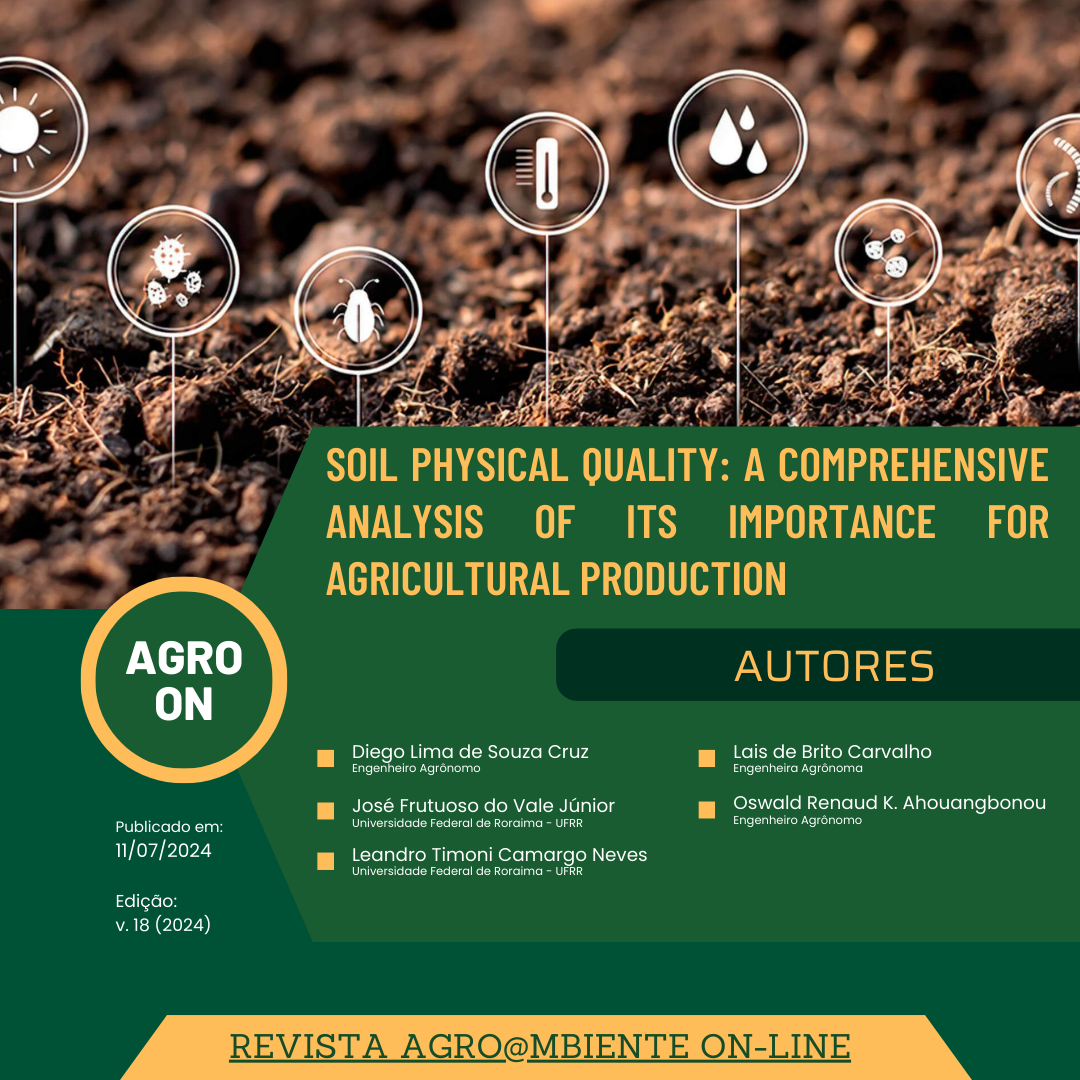Soil physical quality: a comprehensive analysis of its importance for agricultural production
DOI:
https://doi.org/10.18227/1982-8470ragro.v18i00.8060Keywords:
Compaction. Management and conservation. Sustainability.Abstract
In Brazil, soil physics has acquired great notoriety in recent decades due to losses in agricultural production resulting from soil degradation. Degraded areas are commonly abandoned and generate greenhouse gas emissions, which is why the conservationist soil management have been a priority in government programs. The application of this type of management requires indepth knowledge about the physical properties of the soil and how each of them interacts with other components of the environment. In this context, the objective of this review article was to bring scientific work that correlated the physical quality of the soil with agricultural productivity. Articles indexed in the Web bases of Science, Scopus, Scielo and Redalyc were used. This methodology provided 129 articles, 4 books, 1 book chapter and a doctoral thesis. It can be established that the physical quality of the soil is dynamic and influenced by a set of properties simultaneously, also responding to soil management and climatic conditions. Compaction is the most studied property and has direct effects on the loss of agricultural production, leading many areas to erosion and compromising the soil’s environmental functions. It is considered that maintaining the physical quality of the soil is an essential component within the planning of agricultural activities and can prevent the degradation of areas. Understanding the dynamics of these properties can also help in reversing advanced cases of loss of soil physical quality.

Downloads
Published
Issue
Section
License
Copyright (c) 2024 AGRO@MBIENTE ON-LINE JOURNALRAGR

This work is licensed under a Creative Commons Attribution-NonCommercial-NoDerivatives 4.0 International License.
I declare on my behalf and on behalf of the other authors that I represent in the act of submitting this article, to REVISTA AGRO@MBIENTE ON-LINE that: • 1. The content of the article is the result of original data and not published or submitted to other journals . • 2. In addition to the lead author, all co-authors participated sufficiently in the work to make public their respective responsibilities for the content. • 3. In case of acceptance of the article, the authors agree that the copyright referring to it will become the exclusive property of Revista Agro@mbiente On-line, any reproduction, total or partial, in any other part or means of dissemination is prohibited, printed or electronic, without the prior and necessary authorization being requested and, if obtained, acknowledgments must be made to the Revista Agro@mbiente On-line of the Centro de Ciências Agrárias/UFRR.


